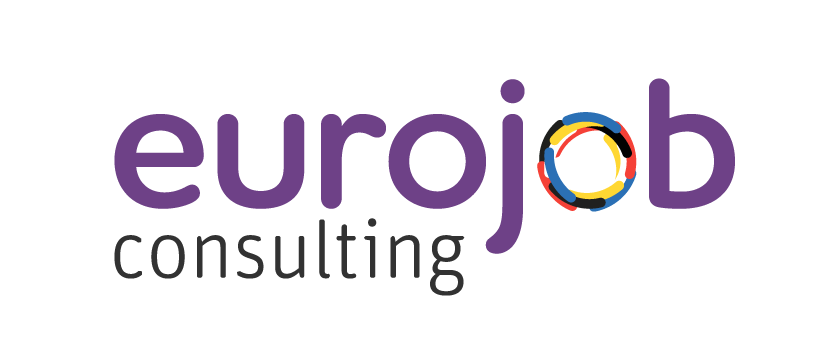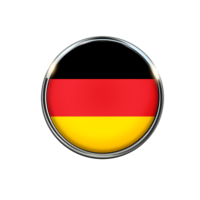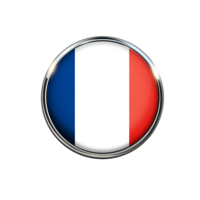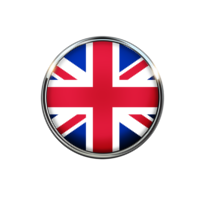
Settling in Germany
Export guide beyond the Rhine for French SME
Settling in Germany: why it's a good idea

German economy
Les secrets d'une réussite
The fundamentals: robust growth, low unemployment
For several years, the success of the German model has been praised. If this refrain could seem repetitive in the ears of the French, it must be admitted that Germany has emerged from the crisis stronger than it has entered. After the terrible year 2009, when production fell by 5%, the country made a flash catch-up in 2010, with GDP growth of 3.6% and then 3% in 2011, before returning to lower levels in 2012 (+ 0.4%) and 2013 (+ 0.1%), caught up by the crisis in the euro zone, where Germany exports nearly 40% of its production. France is Germany's largest economic partner. In 2014, GDP once again recorded a solid growth, at 1.5%, a level it should maintain in 2015.
Beyond the measure of the gross domestic product, Germany impresses mainly because of the evolution of its labor market. With 42.6 million people at work, Germany broke a record of activity! While it had 5 million unemployed in 2005, here are the number reduced to about 2.7 million today (January 2015), or 6.4% of the workforce. The south of the country has virtually eliminated unemployment which is considered as residual, less than 4% of the active population. It displays numbers that make many young people dream in southern Europe: unemployment for 15-25 year olds is 8.1%, compared to 50% in countries like Spain and Greece.
The great challenges of the coming years

Of course, the good health of the economy is not everything. The demographic decline contributes a lot to this uninterrupted drop in unemployment. From 82 million in 2008, Germany has only 80.8 million inhabitants in 2013, and is expected to lose another 6.5 million by 2025, unless immigration compensates for this loss. This one is very important right now. In 2012, 1.1 million people settled in Germany, mainly from Eastern European countries such as Poland, Romania and Hungary, for a largely positive demographic balance, at about 370,000 people.
These elements are essential to understand today's Germany. The country's aging population tends to save for its old age. The state does a lot for its retirees but at the same time has to encourage the birth rate, the work of women and seniors and immigration if it wants to limit the fall of the active population and maintain its social model. These are the great challenges of the coming years. As for young graduates, fewer and fewer, they are highly courted by companies, which creates a real tension in the qualified job market. Young German-speaking alumni currently have every opportunity in the German labor market.
The springs of the German economy: the big sectors
Traditionally, German growth relies on the dynamism of its exports. Almost a quarter of jobs (24%) are directly or indirectly dependent on exports, in the industry it is more than one out of two related jobs (55%). Germany was, in 2013, world champion of the surplus of foreign trade. The country has exported 200 billion euros more than it imported!

Among the products made in Germany that are pulled abroad is primarily the automobile. The automobile is the driving force of the German industry. It employs nearly 750,000 people with a turnover of 356 billion euros in 2012, making Germany the fourth largest producer in the world, after Japan, China and the United States. The Volkswagen Group (VW) , which covers the whole range of vehicles, is the leading player in the sector. VW realizes 190 billion euros of turnover per year, is the second largest global manufacturer and the first European. It is headquartered in Wolfsburg, the "Autostadt", but produced at several German locations such as Ingolstadt, which manufactures Audi luxury brand vehicles.
The success of the German automobile relies heavily on its so-called « premium » or luxury brands, which dominate the industry globally - BMW , Mercedes-Benz (Daimler), Audi , Porsche . These brands are very popular in emerging countries: Audi is the preferred brand of Chinese officials. The automotive industry has thousands of subcontractors, medium-sized companies that produce parts and advanced electronic systems. The pieces are often assembled in the eastern countries bordering Germany before being completed in Germany. A classic model of BMW is composed of 80% of parts not manufactured by the Group.
The second product exported by Germany is the machine. The country is specialized in the production of machine tools, these machines are used most often to produce, which allows the country to be located upstream of the process of production and to export. Two-thirds of the machine production goes abroad. That's why he has benefited a lot and still benefits from the industrialization of emerging countries like China, Southeast Asia in general and Brazil. Conversely, the slightest jolts of the international situation are felt quickly on the volume of business. In 2012, about 970,000 people worked for one of the more than 6,000 machinery companies, more than any other industrial sector. Machine producers are often highly competitive mid-sized companies in the south and west of the country. 87% of these companies employ fewer than 250 people, only 2% have more than 1,000 employees.
The third flagship product is chemistry. Germany is one of the world's leading manufacturers of chemicals, with annual sales of around € 201 billion and employs more than 430,000 people, making it the European leader in the sector. BASF is the world's leading chemical group and is located in the port of Ludwigshafen, one of the largest industrial sites in the world.
The fourth sector is advanced electronics. This industrial branch covers a large number of activities such as automation techniques, home appliances or leisure electronics, lighting techniques, security systems, energy technology, electrical cables and wires, technical medical or electronic components such as electronic chips (or chip). The companies in the sector employ 840,000 employees for a turnover of 170 billion euros. A large part of this turnover is made for export. Siemens is the flagship group in this area, with a turnover of around 73 billion euros in 2013.
| Sector | Number of enterprises (2011) | Employees | Turnover (in € bn) |
|---|---|---|---|
| Automobile | 1 000 | 750 000 | 365 |
| Machinery construction | 6 300 | 970 000 | 207 |
| Electrical | 4 300 | 840 000 | 170 |
| Chemistry | 1 200 | 430 000 | 201 |
Les secrets du « modèle allemand »
The Mittelstand, an "economic method"
When we talk about the "German model", we often mention the Mittelstand, the fabric of highly competitive mid-sized companies, so often cited as an example. What is behind this term? The word Mittelstand, literally "what is in the middle", is a fuzzy concept. It is used to describe all companies that are neither large groups nor very small businesses (TPE). Regardless of size, it is the economic "method" that distinguishes them. Here is a concrete example to understand.
EBM-Papst, an example of "hidden champion"
When talking about German SMEs, there are few names that evoke something for the general public. And yet, they often occupy the position of leader of a very specialized industrial sector, or "niche". This is why they are called "hidden champions". The history of the EBM-Papst company sums up well the recipe for the success of these firms. This is one of many examples that we have been able to study closely. EBM-Papst is the world leader in the fan market. The fan, a niche market of considerable importance in the industry: not a computer, not a cooling system, not a car that is not equipped!
EBM-Papst was founded by an entrepreneur in the village of Mulfingen, in the heart of the Baden-Württemberg countryside, about 100 kilometers from Stuttgart (South-East). In 2012, we met its founder, Gerhard Sturm, now 80 years old. The entrepreneur, from a modest family, created the company at 29 in a shed with about fifteen employees thanks to a loan from his mentor. The rest is one of those German-style success stories that combine discretion and comfortable profits.
SECRET OF SUCCESS
"My obsession has always been the constant improvement of my products" Gerhard Sturm, founder of the world's number 1 fan. " My secret ? All my career, I had only one obsession in mind: improve our products. Every week, at the technical meeting, I came with a drawing for a new engine or fan. Our growth is mainly related to this innovation effort and the constant adaptation of our products to the market. We have grown steadily by 10% per year since foundation, I never wanted to be listed on the stock market. Innovation is based on a long-term vision that the current financial deadlines do not allow. "
Today, EBM-Papst employs 11,000 people worldwide, including 1,500 in China. It exports more than half of its turnover abroad. She was greeted by Chancellor Angela Merkel at the Hannover Fair in 2013, the world's largest industrial fair. Among the "hidden champions" known to the general public: Kärcher, the now famous manufacturer of high-pressure cleaners, or Haribo, famous confectioner.
Niche market, competitiveness and "industry spirit"
Mittelstand therefore refers to all medium-sized companies specializing in niche markets that export a large part of their production. Because their products are very innovative and positioned on the high end, they have few competitors and often hold the title of leader in their market. Their small size, their long-term vision, their strong investment in research and development allow them to keep their faculty of innovation and their desire to be independent. They rely on a strong motivation of their employees who often carry out their entire career within the company. This is one of the reasons why salespeople are so rare in the job market: most of the time, it is the companies that make their engineers or technicians field salespeople. SMEs work in close collaboration with major industrial groups, with whom they set out to conquer global markets. This is called "the spirit of industry", which wants that within the same industrial branch, SMEs and large groups act together rather than compete.
Chapters
- Settling in Germany: why it's a good idea
- How to know if you are ready to export to Germany
- How to establish your winning strategy beyond the Rhine
- What you need to know before writing your business plan in Germany
- How to conclude your first sales in Germany
- How to sustain: recruit and manage a German subsidiary
- Legal and technical facts for Germany: answers to the most common questions

Brochure: Preparation and questions for a successful job interview in Germany (French)
About the Author
Cécile Boutelet is a freelance journalist. As a specialist in the German economy and companies, she has been a correspondent for the newspaper Le Monde since 2010. She has been very interested in this book and she has found great interest in it: she has devoted her first years abroad to creating and developing a little company.
Illustrations : Katharina Bußhoff. www.katharinabusshoff.de
POINT CIVILISATION
« A social model where consensus prevails. »Mittelstand companies often claim a family-type capitalism, characterized by very peaceful social relations, where the search for consensus takes precedence over the balance of power, without the need to involve a trade union. This is possible because companies remain of medium size, with strong employee support. These benefit from advantageous social conditions. This family model also has a corollary of "conservative" financing: profits are generally largely reinvested, which allows a high rate of self-financing of these companies.
Specific funding
German banks are very marked by this model. They are also organized in Mittelstand. In addition to the large national institutions (Deutsche Bank and Commerzbank), there are numerous regional banks grouped into networks: the cooperative banks (Volksbank and Raiffeisenbank) and the savings banks (Sparkasse). Each small town has one or two branches of these establishments, which claim their proximity to the client. Rather than investing in financial products abroad, these banks manage personal savings and finance small and medium-sized businesses in their region. Their margin is lower than that of the big banks, they conceive their role as that of an actor at the service of the population and the region, they work in close collaboration with the companies. This is the famous model of Hausbank , the "house bank", which covers a relationship of trust between the entrepreneur and the banker, over a very long period.
GERMANY: An open market full of potential
Un peu d'histoire…
Germany was unified late, in 1871. Previously, the country was made up of independent regions or territories, with their dialect and religion (Catholic or Protestant), dominated by a sovereign who maintained his own court. Recent history has then led the country to be wary of any attempt at centralization. The organization in federal states (Länder) prevailed after the war, returning to this tradition of autonomous regions. This has direct consequences on the economic culture.
Germany is a country where the principle of free market and competition is more entrenched than in France. The artisans who supplied the royal courts used to export their products to the other Germanic states. Later, this tradition allowed companies to conquer the world markets. This is where German export know-how comes from. Moreover, contrary to what happens in France, the state is not traditionally a leading economic player. With the exception of (Post with Deutsche Post, telecommunications with Deutsche Telekom and railway with Deutsche Bahn), he big groups are not linked to the public authorities, and in Germany there is no Paris "grandes écoles" effect. This is the reason why competition rules and the culture of transparency are highly respected, foreign companies and their products are easily accepted on the German market. "A foreign manager will be more easily accepted to run a business in Germany than in France," says a specialist in the sector.
Un marché « naturel » pour les produits français
François Gaillard, consultant and investor specialist of the country, summarizes:
« Germany is a beautiful market, structured, consistent, offering a lot of potential and fully open to French competition. The condition is to have better products than competitors. It's a natural market. Rather than going the other way, in Latin America and Asia, with complex logistics, French companies should prioritize the German market because it is close, accessible. Just take your car and in the day we are there. The culture and the administrative infrastructures are close to ours. The operation of a company is very similar. I am very optimistic about the chances of French companies in Germany. »
GERMANY: A country where the legal and fiscal framework is often more advantageous than in France
Without being a tax haven, Germany offers companies on its soil a relatively favorable environment. Here are some examples, which we will detail in the rest of this book, especially in Chapter 6 in the Legal and Technical Summary.
In Germany, employers' contributions amount to around 20%, which is half the French rate. The managing partners of a GmbH (the German limited liability company) can be totally exempted if certain conditions are fulfilled.
Labor law is also much more flexible than in France. Thus, the legal duration of work is 40 hours. The trial period can run up to six months and it is possible to use the fixed-term contract more widely than in France. The "Mini-job" contract allows an employer to hire employees for a maximum salary of 450 euros per month, taking advantage of extremely low social security contributions. The minimum wage, which came into effect on 1 January 2015, provides for an hourly rate of 8.50 euros per hour, with certain exceptions. As for collective agreements, they do not exist in a generalized way, the creation of the works council is done on the initiative of the employees and the employer, beyond 5 employees. Finally, companies with less than 10 employees are free to dismiss without restriction, without cause, without severance pay, they must simply comply with the legal notice. Dismissal for economic reasons does not require the existence of economic difficulties, a restructuring plan being sufficient. What reassure a French SME, accustomed to more formalities and barriers to dismissal.
SUMMARY
- Germany is a prosperous country with a strong and diverse industry that has weathered the crisis well in recent years.
- The German unemployment rate is low. With the demographic crisis and the aging of the population, the labor market has become tense, especially for qualified profiles. This change of face of the population is one of the great challenges of the coming years.
- Germany's economic success is largely due to the existence of innovative, highly competitive SMEs specializing in a niche market, the Mittelstand.
- French companies have every interest in going to Germany, which is a natural market for their products.
- Creating a subsidiary in Germany allows a French company to benefit from a legal and tax framework that is often more advantageous than in France.


